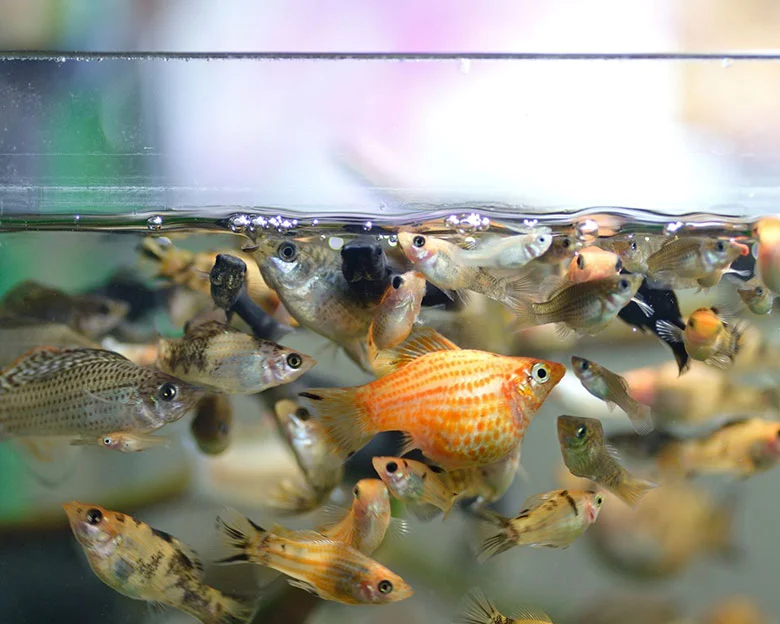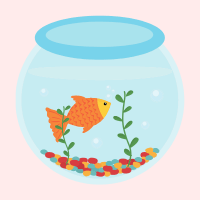Have you ever been mesmerized by the graceful movements of fish in an aquarium? Perhaps you’ve considered getting a pet fish of your own but were intimidated by the task of caring for it.
Fear not, for Molly fish are hardy and active creatures that make for a great choice for beginners. These aquatic beauties come in a variety of colors and fin shapes, adding a pop of vibrancy to any tank.
But there’s more to Molly fish than just their stunning appearance. These fish are native to freshwater streams and rivers in North and South America, and have adapted to a wide range of water conditions.
As a beginner, it’s important to understand the basics of Molly fish care, including proper tank set up, feeding habits, and breeding behaviors. With the right knowledge and tools, you can create a healthy and thriving environment for your Molly fish to flourish in.
So let’s dive in and explore the world of Molly fish care, with expert tips and advice for beginners like you.
Key Takeaways
- Molly fish are hardy and active, and can live for 3-4 years in a variety of water environments.
- They are social shoaling fish and should be kept in groups with one male for every three females.
- Mollies are not picky eaters and will eat high-quality flake food, but also need a varied diet that includes algae.
- Breeding is easy, but it is important to have a plan in place for the fry as adults will eat them.
Facts about Molly Fish

You may already know that Molly Fish are hardy and active, but did you know that they come in a variety of colors and fin shapes and are found in fresh, brackish, or saltwater environments? These fish belong to the genus Poecilia and have a native range in Central America and along Gulf and Atlantic coasts.
Molly fish behavior is also interesting to note. They are social shoaling fish and should be kept in groups with one male for every three females. They are not picky eaters and will consume high-quality flake food. Molly fish need open swimming areas and hiding spots, as well as a good filtration system to keep their tank clean. It’s important to provide them with the right conditions to thrive, such as temperatures of 75°-80°F (24°-26.7°C) and hard water.
Tank Set Up
To set up your tank for molly fish, choose a larger tank with open swimming areas and hiding spots. Mollies are active fish that require plenty of space to swim around. A 20-gallon tank is the minimum size recommended for a small group of mollies, but a larger tank is better for a bigger group or if you plan to breed them. When selecting aquarium decorations, choose those that provide hiding spots for your mollies.
They like to have places to retreat to when they feel stressed or threatened. Live plants are also great for providing hiding spots and for helping to maintain good water quality.
It’s important to consider the water conditions in your tank when setting it up for mollies. Mollies are native to areas with hard water, so you’ll want to make sure your tank’s water has a high mineral content and a pH between 7.5 and 8.5. You can achieve this by adding crushed coral to your tank’s substrate or filter. Mollies also prefer warm water, with temperatures between 75 and 80 degrees Fahrenheit.
It’s important to monitor your tank’s water temperature and use a heater to keep it within this range. When it comes to adding salt to your tank’s water, there is some debate among aquarists.
Some believe that adding a small amount of aquarium salt can help prevent diseases and improve overall health, while others believe that it’s not necessary and can actually harm the fish. If you do decide to add salt to your tank’s water, make sure to use a product specifically designed for use in aquariums and follow the instructions carefully.
| Aquarium Decorations | Water Conditions |
|---|---|
| Choose those that provide hiding spots for your mollies. | Make sure your tank’s water has a high mineral content and a pH between 7.5 and 8.5. |
| Live plants are also great for providing hiding spots and for helping to maintain good water quality. | Mollies prefer warm water, with temperatures between 75 and 80 degrees Fahrenheit. |
Feeding and Breeding
Feeding and breeding mollies is an exciting part of having them as pets. These fish aren’t picky eaters and will consume high-quality flake food. However, it’s important to provide them with a varied diet that includes algae.
Mollies enjoy picking at algae, but they also need other sources of nutrition such as live or frozen food. Giving them a varied diet will help them stay healthy and vibrant.
When it comes to breeding, mollies are livebearers and will give birth to live fry. Breeding them is relatively easy, and healthy ones can produce batches of fry every month. However, it’s important to have a plan in place for fry management.
Adult mollies will eat fry, so it’s necessary to have hiding spots for the fry to grow. Separating the adults from the fry is also an option.
With proper care, mollies can live for 3-4 years and produce thousands of babies in their lifetime.
Author’s Experience and Tips
The author of the expert guide on molly fish care has been keeping these fish for more than two decades. Her experience in keeping mollies has led her to discover some valuable insights regarding their care.
For instance, she learned the hard way that providing hiding spots for fry is crucial. After losing a whole batch of fry to hungry adults, she realized the importance of having hiding spots for the fry to grow.
Apart from being an aquarium enthusiast, the author has other hobbies, including nunchuck skills and experimenting with low-tech planted setups. She’s also an avid South American cichlid enthusiast and enjoys the challenges and rewards of keeping these fish.
Her Instagram account showcases her tanks and aquarium-related endeavors.
Frequently Asked Questions
What Are Some Common Health Issues That Molly Fish Can Experience?
Molly fish are prone to several health issues, including bacterial and fungal infections, parasites, and swim bladder problems. Preventive measures include maintaining good water quality and a varied diet, while treatment options include medication and quarantine.
Can Molly Fish Be Kept With Other Types Of Fish Or Should They Be Kept In A Species-Only Tank?
Molly fish can be kept with other peaceful fish, but avoid aggressive, fin-nipping species. Tank mates should be similar in size and have compatible water requirements. Breeding requires fry care and hiding spots to protect them from adult mollies.
How Often Should Water Changes Be Done In A Molly Fish Tank?
For optimal health, change 10-25% of your molly fish tank water weekly. Keep water temperature in the ideal range of 75°-80°F (24°-26.7°C). Frequency of feeding should be 2-3 times daily, with a varied diet that includes algae.
Are There Any Plants Or Decorations That Molly Fish Particularly Enjoy In Their Tank?
Molly fish enjoy hiding spots like plants and decorations to explore. Best tankmates include Corydoras catfish, swordtails, plecos, and platies. Ideal habitat includes open swimming areas and dense vegetation for cover.
What Is The Average Lifespan Of A Molly Fish, And How Can Their Lifespan Be Extended?
Molly fish have an average lifespan of 3-4 years. To extend their lifespan, provide a varied diet of high-quality flake food and algae, maintain good water quality, and avoid overcrowding. Supplementing with vitamins and minerals can also help.
Take Action Now to Create a Thriving Environment for Your Molly Fish
Congratulations! You now have all the essential information you need to care for your Molly fish. These fish are hardy and active, but they still require proper care to thrive.
Ensure that you provide them with a suitable tank set up, including a good filtration system, proper water conditions, and ample space. Feeding your Molly fish a varied diet will keep them healthy and happy.
If you’re interested in breeding these fish, be sure to provide them with the right environment and social groupings. With these expert tips, you can enjoy the beauty and activity of Molly fish in your aquarium for years to come.
So go ahead and create a healthy and thriving environment for your Molly fish, and watch them swim around with joy and vigor!

